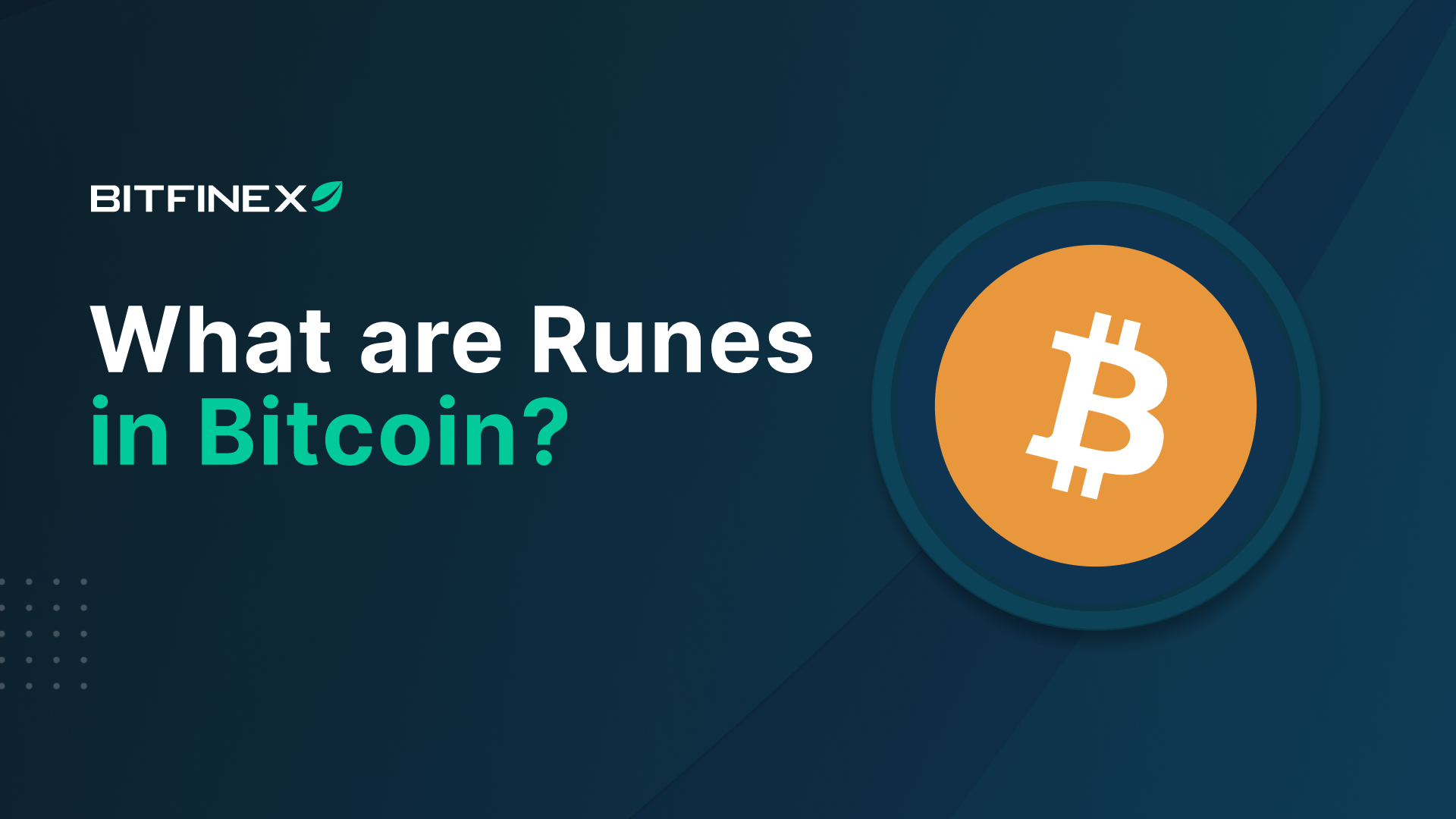
06 Oct What are Runes in Bitcoin?
Bitcoin Runes are unique, fungible tokens that exist on the Bitcoin blockchain. They are designed to represent fungible assets with distinct characteristics and metadata. Casey Rodamor, the creator of the Ordinals protocol, recently dropped a proposal for a replacement to the BRC-20 fungible token protocol, this replacement is known as Runes.
Deciphering the Enigma of Bitcoin Runes
In the burgeoning world of Bitcoin-based tokens, the Runes protocol stands as a disruptive newcomer, with the potential to recalibrate the existing dynamics of poorly implemented token schemes on Bitcoin, spawned from Ordinals.
Runes were developed by Casey Rodarmor, the creator of the Ordinals protocol. Runes aim to offer a user-friendly, UTXO-based alternative to existing tokenisation protocols such as Ordinals, ORC-20, BRC-20, and Stamps.
Runes are a brand new type of fungible token on the Bitcoin network. These tokens differ from existing alternatives in several ways. First of all, Runes are native to Bitcoin’s Unspent Transaction Output (UTXO) model. This minimises the creation of “junk” UTXOs, thus enabling more responsible UTXO management and a smaller on-chain footprint.
The Bitcoin blockchain is designed to be a minimal and efficient ledger for transferring value through Bitcoin transactions. Introducing tokenisation schemes like Ordinals and Stamps can add extra data to this lean structure, which can have repercussions for the blockchain’s scalability and performance.
Ordinals and Stamps introduce extra data into each transaction they are a part of. For example, Ordinals “inscribe” Satoshis with additional information, and Stamps add “data blobs” to create digital artefacts. While each piece of data may be small, the aggregate effect could be significant, particularly if these tokenisation methods become widely adopted.
In the case of Stamps, the data is stored on-chain and cannot be pruned, meaning that it permanently takes up space on the blockchain. This is different from other systems where additional data could potentially be stored off-chain or pruned to save space.
Designed for ease-of-use, Runes lack the implementation complexity often found in other protocols, like Ordinals, Stamps, or BRC-20 tokens. Runes hold the promise for several impactful changes in the Bitcoin token ecosystem. By adhering to Bitcoin’s UTXO model, Runes offer a form of “harm reduction” by reducing the unnecessary bloat of the UTXO set, a significant issue with existing protocols like BRC-20 and Stamps.
Its simpler design could attract more developer interest and participation, potentially accelerating innovation within the Bitcoin development community. A seamless user experience could attract more mainstream adoption as users do not need to handle native tokens or deal with off-chain complexities.
Ordinals, Stamps, BRC-20s, and Runes, Oh My!
What are Ordinals & Inscriptions?
Ordinals and Inscriptions offer a somewhat contentious method for generating NFTs within the Bitcoin network. These are etched onto individual Satoshis, Bitcoin’s smallest unit, with 100 million Satoshis making up a single Bitcoin. Through Ordinals, these Satoshis acquire numismatic significance and can be “marked” with any chosen content, forming distinct digital assets on the Bitcoin blockchain that can be bought or sold. Although this data is maintained on-chain, its storage design allows for optional pruning.
Ordinals, by giving individual Satoshis unique characteristics or “numismatic value,” could potentially compromise the fungibility of Bitcoin. In a perfectly fungible asset, each unit is interchangeable with any other unit; in the case of Bitcoin, this means one Satoshi should be identical to another. However, Ordinals effectively ‘tag’ Satoshis with unique attributes, making them distinguishable from one another.
This could create a market where certain Satoshis are valued more than others due to their unique Ordinal Inscriptions, thereby breaking the inherent fungibility that is one of the cornerstone features of cryptocurrencies like Bitcoin. This departure from fungibility could introduce complexities into the transaction process and could have a wider impact on how Bitcoin is used and valued.
What are Stamps?
Stamps and SRC-20 tokens share similarities with Ordinal Inscriptions and BRC-20 tokens, as all these tokenisation schemes utilise the Bitcoin blockchain to embed arbitrary data, thereby creating unique, Bitcoin-native digital items. However, Stamps embed data into the Bitcoin blockchain that cannot be pruned.
This means that the data is permanently stored on every full node, contributing to an ever-growing blockchain size. The addition of data blobs by Stamps contributes to “blockchain bloat.” As more people use Stamps to add extra data to transactions, the size of each block can increase, potentially filling blocks faster and leaving less space for financial transactions. Over time, this can make it more cumbersome and resource-intensive to operate a full node, thereby centralising the network and making it less accessible to average users.
Additionally, SRC-20 tokens differ from BRC-20 tokens based on Ordinals in that they don’t make use of Segwit witness data; instead, they are part of multi-signature transactions where the SRC-20 token information is contained within the space allocated for the other key’s signature data.
What are BRC-20 tokens?
BRC-20 tokens build upon the concept of Ordinal Inscriptions by adding an additional layer of complexity. Instead of merely embedding a serial number into a single Satoshi, BRC-20s utilise JSON (JavaScript Object Notation) to create basic token contracts for issuance. These tokens have a preset supply limit and exhibit certain constraints when compared to other tokenisation methods.
What are ORC-20 Tokens?
ORC-20 tokens enhance the approach initially developed for BRC-20 tokens. Like their predecessors, they use Segwit witness data and JSON but come with additional advanced features. ORC-20 tokens offer the flexibility of a variable supply and can employ the “mint” function to facilitate intra-transaction transfers, thereby conserving blockspace.
What are Runes and How are They Different?
“Runes” represent a novel approach to creating a fungible token protocol. Unlike existing protocols such as BRC-20, Runes are UTXO-based, meaning they integrate seamlessly with Bitcoin’s existing architecture while minimising unnecessary outputs. Runes are uniquely identified balances held within UTXOs (Unspent Transaction Outputs). Transactions involving runes contain specific protocol messages initiated through an OP_RETURN output and additional data pushes.
This allows for the flexible assignment and transfer of Rune balances, with invalid protocol messages leading to the burning of Runes as a safeguard for future upgrades. Additionally, Runes can be issued with specific human-readable symbols and decimal configurations, and their issuance and transfer do not require the use of native tokens, making the protocol less cumbersome and more user-friendly. Overall, Runes offer a simpler, more intuitive way to handle fungible tokens on the Bitcoin blockchain.
Will Runes Catch On, or Will They Fizzle Out Like Other Token Fads?
The Runes protocol stands at a crossroads. On one hand, it offers a simplified, efficient alternative to BRC-20, with the potential to address Bitcoin’s inefficient tokenisation issues introduced via Ordinals. On the other hand, their rapid, almost impulsive, adoption carries the risk of long-term sustainability. The community must decide whether it will prioritise thoughtful, scalable solutions or continue down the path of recklessness for quick gains.
Runes represent a promising but controversial development in the realm of Bitcoin meta-protocols. Its simplified, efficient design stands in stark contrast to the inefficiencies of BRC-20, Stamps, and ongoing debates within the Ordinals community. Runes promise to bring transaction fee revenue, developer interest, and more users to the Bitcoin network. The key question is whether Runes will offer long-term scalability and sustainability.
As it stands, the Runes protocol could either emerge as a groundbreaking solution for token functionality and scalability or become another cautionary tale of hasty blockchain innovation. The onus now lies on the community to determine its fate.
The introduction of Runes, Ordinals, and Stamps as new tokenisation protocols on the Bitcoin blockchain raises questions about their necessity and efficiency, particularly when compared to more established protocols like Counterparty and Omni Layer.
Firstly, Counterparty and Omni Layer have already been in use for a number of years, benefiting from community trust, real-world testing, and ongoing development. They are more mature protocols with larger user bases and support networks, making them more reliable choices for many developers and end-users.
Secondly, complexity and user experience are significant considerations. Runes, Ordinals, and Stamps introduce new mechanisms for tokenisation that may or may not offer any advantages over existing solutions. For example, the UTXO-based state model used in Runes might minimise “junk” UTXOs, but it introduces its own complexities and may not significantly improve upon the state models used in Counterparty or Omni Layer.
Thirdly, the introduction of multiple, differing tokenisation protocols can fragment developer attention and resources. Each new protocol has its own particularities, requiring time and effort to learn. This dilutes the developer mindshare that could be concentrated on improving a smaller set of well-understood and widely-used protocols.
Lastly, one of the biggest challenges in blockchain technology is interoperability. The proliferation of multiple tokenisation methods may further complicate the seamless exchange of tokens and assets across different protocols, or Bitcoin “layers”, hampering the broader adoption of Bitcoin.
In summary, while Runes, Ordinals, and Stamps offer interesting approaches to tokenisation on the Bitcoin blockchain, they may represent a redundant effort that fragments the ecosystem, rather than a meaningful improvement over existing, more elegant solutions.



